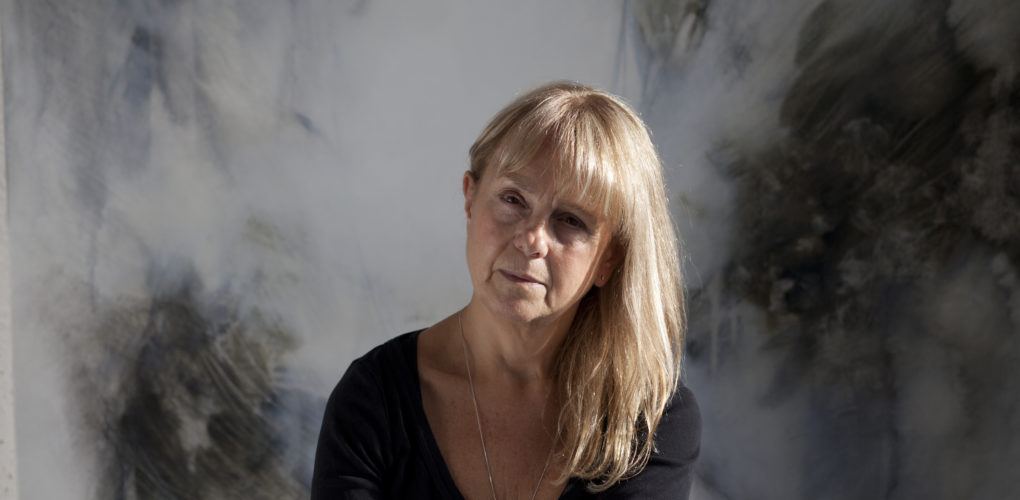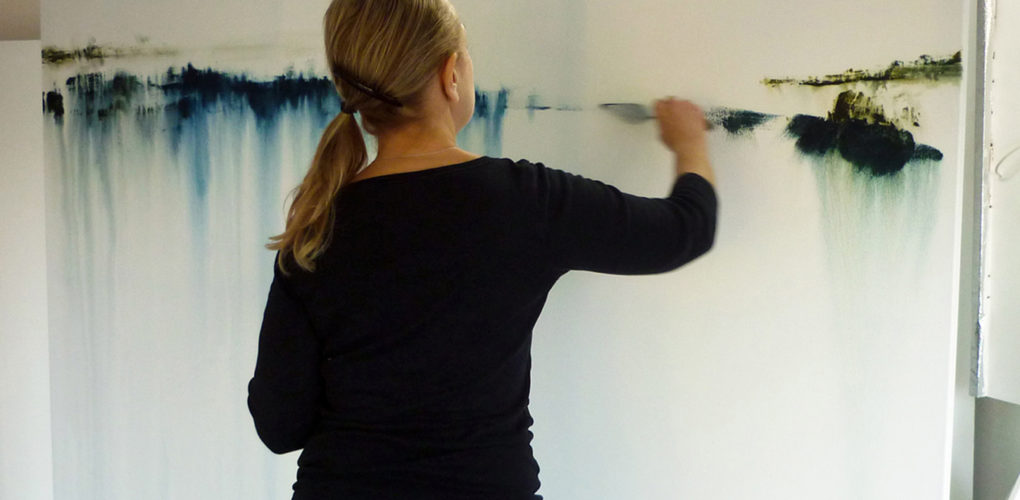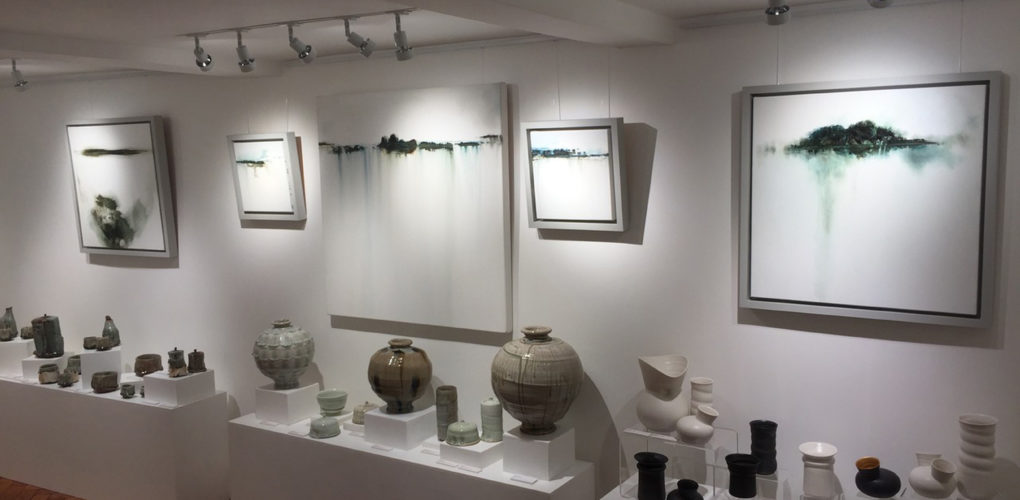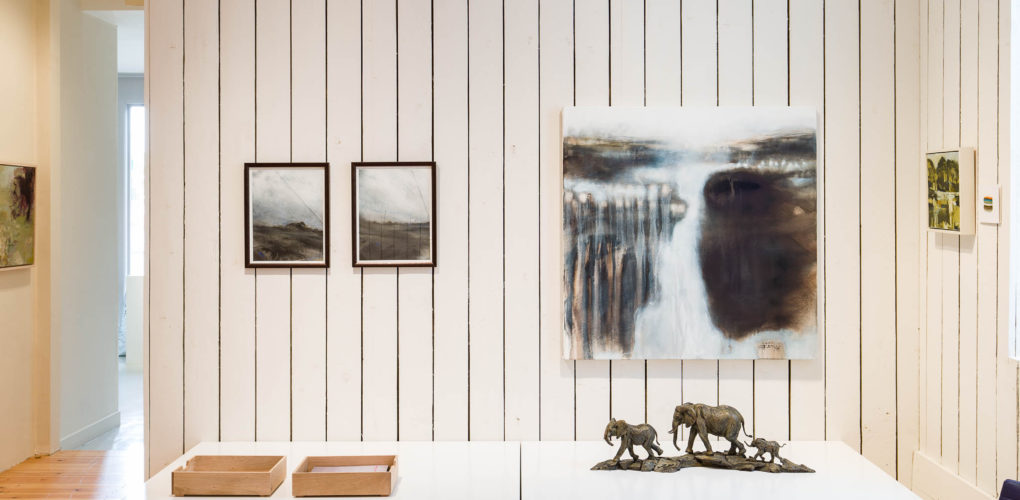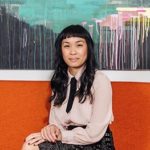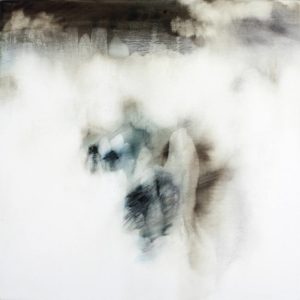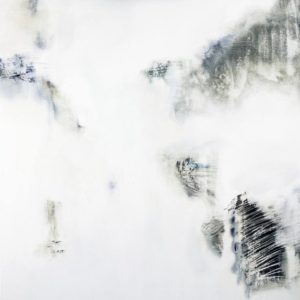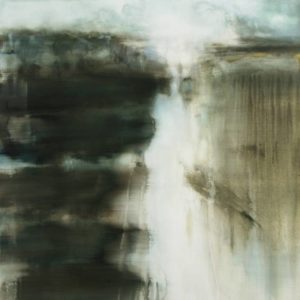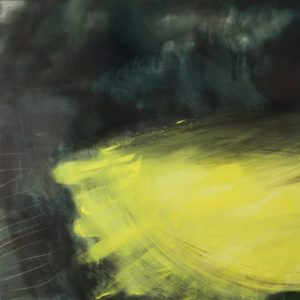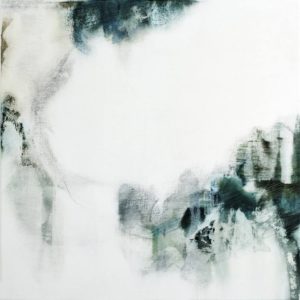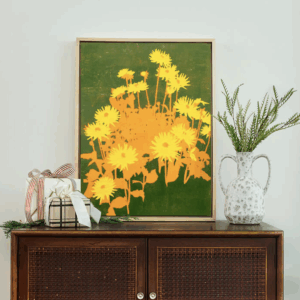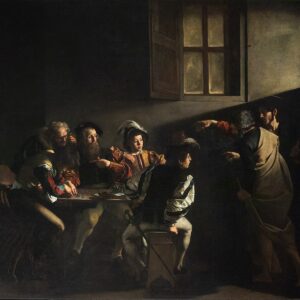Inside the Studio
 Expression and Mark-Making with Gina Parr
Expression and Mark-Making with Gina Parr
What are the major themes you pursue in your work?
I grew up in Exeter Devon, UK in a working class home with very little cultural stimuli. As an only child I spent much time alone, immersing myself in creative activity thanks to an early need for self-expression. I also spent time mackerel fishing with my father, the trips forming my emotional bond with the landscape and seascape of the South West: beautiful wild open spaces, changes in the weather and terrain, and the freedom of natural space. Counter to this, my life at home was very chaotic and cramped as my mother, an extreme hoarder, filled every available space with possessions, and was obsessed with collecting. My father, Wilf’, died when I was 17, leading to an escalation in my mother’s hoarding. My work explores these central tenets through abstracted shape and form, with undercurrents of meaning surfacing throughout the painting process as my dialogue with the painting progresses.
How did you first get interested in your medium, and what draws you to it specifically?
Drawing and painting were always my chosen childhood means of expression. The secret dialogue I developed with mark-making gave me the means to express and convey feelings that I was unable to do adequately through conversation or contact with others. Once I had access to art books, I found and fell in love with Oriental brush and calligraphic work and the American Abstract Expressionists, both of which continue to divergently inform my mark-making. I still particularly like the immediacy of the medium, and the heady smell of oil paint always reminds me of my much loved art school days.
How has your style and practice changed over the years?
In 2007, I returned to work full time as an artist after 25 years as a Television Production Set Designer in London, and in 2010 I moved back to Devon. I originally graduated with a First Class BA Honours Degree in Fine Art in 1979, and practiced as a performance artist in the early 1980’s with funding from Arts Council England. I went on to study Set Design at Chelsea College of Art, subsequently working for the BBC as a Senior Production Set Designer, and later as a freelancer for all major channels designing many large prestigious shows. My career as a Television Production Set Designer gave me the opportunity to create and control space, whilst utilizing my Fine Art training to approach each design with a painter’s eye. When I returned to my art practice, coupled with my move back to Devon, themes from my childhood memories fueled my interest to further explore space through my painting. I also started to photograph in 2010, my way of ‘painting’ while traveling (another love), extracting illusionary space and form from sometimes cramped and chaotic environments in Europe, urban India, the Far East, and Cuba. I have found a developing symbiosis between my photography and my painting.
Can you walk us through your process? Do you begin with a sketch, or do you just jump in? How long do you spend on one work? How do you know when it is finished?
Having worked for years planning set designs on paper, I now rarely use drawing preparation. I am hungry for the immediacy of paint. My work is spontaneous and often relies on getting my feelings down quickly. When painting, I am completely immersed in the process. I build a reverberating relationship with the canvas, a push and pull of chance and control. As much is taken away from the painting as is added, with constant building and washing of the canvas aiming to evoke an atmosphere drawn from the painting process, the initial emotional trigger, and the color palette employed. I use palette knife, cloth, brush and sponge to add, remove, scratch, blur and work the paint, often utilizing large amounts of water poured down the canvas which makes it necessary to paint in Wellingtons….. I have also recently taken to drawing into the paint with charcoal. Each painting has its own life and I know from instinct when a piece is finished, some happen very quickly while others need to be returned to many times before they are complete.
What was the best advice given to you as an artist?
My former Art tutor, Artist Graham Rich, told me to never present myself as a “local” artist and to always aim for a national and international audience.
Prefer to work with music or in silence?
When I’m working in the studio I work to Radio 4. I love the reliable background voices, and the way the day is marked by the dependable programming. I don’t actively listen to it, but find it comforting and conducive to my work environment.
